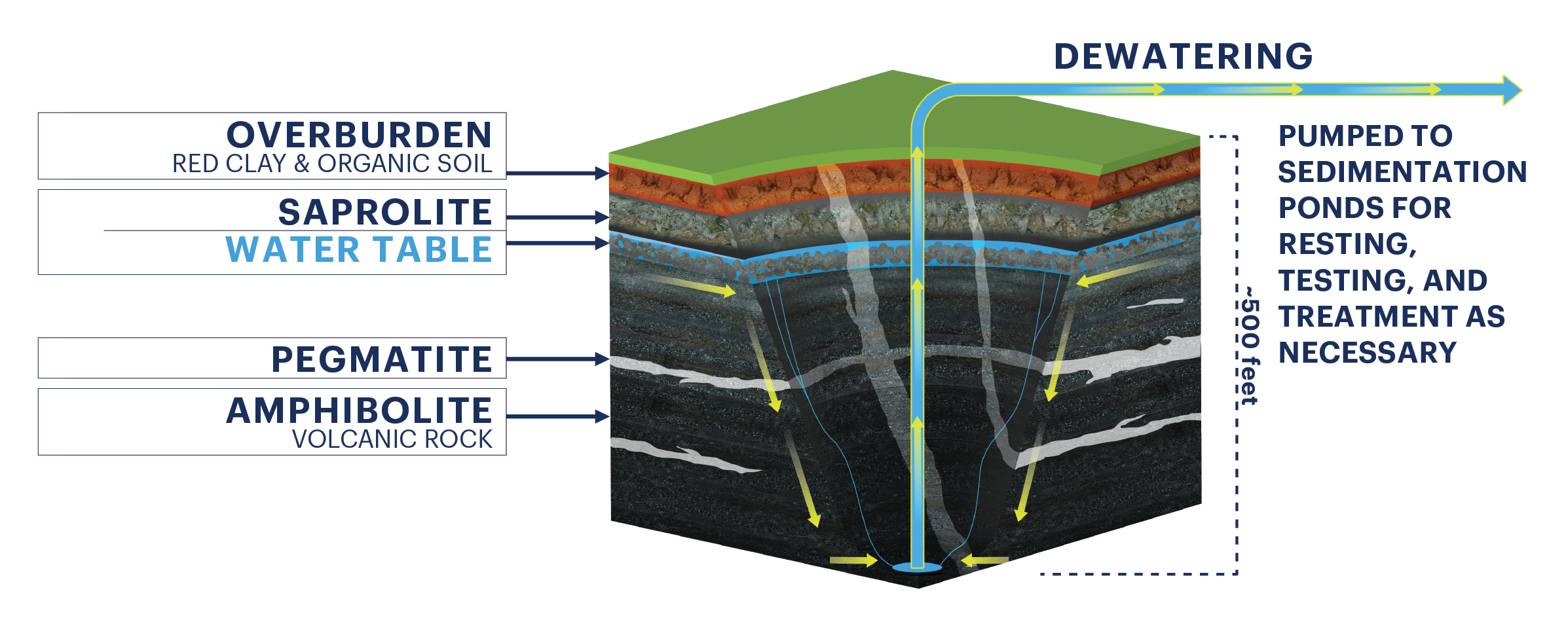Protecting Water Resources
We are committed to the diligent protection of water resources, including the quality of the groundwater around our proposed Carolina Lithium operation.
We have conducted extensive testing related to water quality, and according to our models, we do not expect to materially change the composition of surface or groundwater in our area of operations. We are designing our Carolina Lithium project to help protect water quality in the following ways:
None of the water being used in our operations will be discharged to rivers and streams. Instead, wastewater will be pumped to an onsite process water treatment facility, where it will be treated before traveling to a water pump station and discharged to Two Rivers Utilities for further treatment.
The U.S. has some of the strictest water regulations in the world. We will be subject to federal and state oversight by regulators and the conditions of our permits, and we intend to fully comply with these requirements.
Will Carolina Lithium create or release arsenic into the local groundwater?
No. Carolina Lithium will not utilize, create, or release arsenic into the groundwater.
Arsenic is not utilized in the process of producing lithium hydroxide and is not a byproduct of lithium mining. However, arsenic is known to be naturally occurring in the rock, soil, and water in this region.
When we excavate lithium ore, we will dig pits below the water table, as demonstrated in the graphic below. Water that drains into the pits, even if it already contains arsenic or touches rock with arsenic in it, would be pumped out of the pit to be rested, tested, and treated, if needed, in sedimentation ponds. In these circumstances, we plan to, in effect, return the groundwater better than it naturally occurred.
Existing Gaston County Arsenic Concentrations
Arsenic and other heavy metals are naturally occurring in varying concentrations in the rocks, soil, and groundwater throughout this region of North Carolina. The central part of North Carolina has the greatest number of groundwater wells in the state with detectable and elevated levels of arsenic because of the underlying rock type – volcanic rocks – according to the North Carolina Department of Environmental Quality.
1 Gaston Water Map, Gaston County DHHS & UNC Charlotte
Expanding Municipal Water Resources
At Carolina Lithium, our need for municipal water supply for lithium hydroxide production creates the opportunity to expand access to water supplies for residents and businesses in the area. We are collaborating with local utilities to extend the municipal water system to our project area, which would, in turn, expand access for others in the area who are currently relying on groundwater resources for their primary water supply.
We are already working with Gaston County to complete design engineering for the potential waterline extension. We also have agreed to fund the construction of the waterline extension, which would be in place prior to the beginning of project operations and would provide a foundational water line around the Carolina Lithium site with stubs that would facilitate the connection to nearby neighbors.



